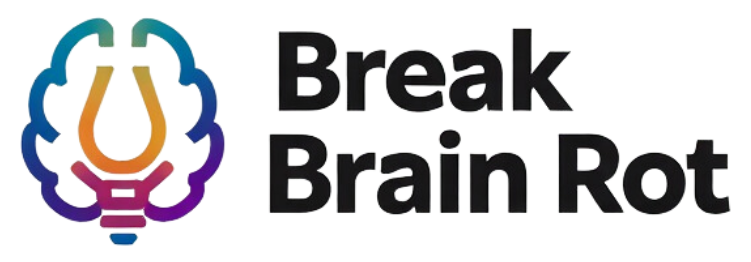It’s late at night, and you tell yourself just one more scroll before bed. Suddenly, an hour has passed, and you’ve consumed a flood of alarming headlines, negative posts, and endless bad news. If this feels familiar, you’re not alone—it’s a behavior known as doomscrolling. The psychology behind doomscrolling can help explain why we’re drawn to negative information and, more importantly, why it can slowly erode our mental well-being. In this article, we’ll explore what doomscrolling is, the psychological and biological factors that drive it, its effects on your health, and—most importantly—how to break the cycle.
Table of Contents
- What is Doomscrolling?
- The Psychology Behind Doomscrolling
- Mental Health Effects of Doomscrolling
- Biological and Neurological Triggers
- How to Break the Cycle of Doomscrolling
- FAQs
- Conclusion
What is Doomscrolling?
Defining the Term and Its Origins
Doomscrolling refers to the compulsion to keep scrolling through streams of bad news, especially on social media or news apps. The term rose to prominence during times of global crisis, such as the COVID-19 pandemic, when updates seemed urgent and constant. While staying informed is important, doomscrolling takes it to an extreme by creating an endless cycle of worry and distress.
How Social Media and News Platforms Fuel Doomscrolling
Social media platforms are designed to keep you engaged. Algorithms prioritize dramatic and negative news because it captures attention and generates clicks. The constant stream of alarming headlines, trending hashtags, and breaking stories exploits our natural curiosity and unfortunately encourages doomscrolling. This article on social media addiction explains how similar mechanisms trap us into continuous use.
Everyday Examples of Doomscrolling
Doomscrolling doesn’t always happen with global crises. It might be endlessly reading crime news, health warnings, or trending scandals. Imagine checking your phone before bed and realizing you’re still awake two hours later, feeling more anxious instead of relaxed. These everyday patterns add up and shape how your brain processes stress.
For more scientific insights, see the American Psychological Association’s research on media and mental health.

The Psychology Behind Doomscrolling
The Brain’s Negativity Bias
Humans are hardwired with a negativity bias, meaning we naturally pay more attention to bad news than good. From an evolutionary standpoint, being alert to threats increased survival chances. Today, however, that same instinct keeps us glued to negative headlines. As Scientific American explains, our brains process negative stimuli more deeply and store them longer in memory, reinforcing the desire to seek them out.
Uncertainty, Fear, and the Need for Control
Doomscrolling feeds into uncertainty. When facing uncontrollable events, we seek more information to reduce anxiety. The paradox is that instead of reducing fear, constant scrolling often magnifies it. This search for control becomes obsessive, leaving you feeling more powerless than before.
Habit Formation Through Reinforcement Loops
The psychology of doomscrolling also involves reinforcement loops. Negative news provides a tiny spike of adrenaline, keeping you alert. Inconsistent rewards—sometimes shocking, sometimes mundane—make you keep scrolling in hopes of finding something important. Over time, this behavior locks in as a habit, similar to other digital addictions. Cognitive biases explained can shed more light on why your brain repeatedly falls into this loop.
Mental Health Effects of Doomscrolling
Anxiety and Stress Amplification
When you consume hours of negative content, your body reacts as though the threats are immediate. This spikes cortisol and adrenaline, hormones linked to stress. Prolonged doomscrolling builds general anxiety and makes you feel like danger is ever-present. According to the Mayo Clinic, excessive media exposure is directly linked to heightened anxiety symptoms.
Links Between Doomscrolling and Depression
Studies suggest that negative media consumption can reinforce feelings of hopelessness, a key marker of depression. By repeatedly focusing on distressing information, you trap yourself in cycles of pessimism where the world feels worse than it actually is.
Sleep Disturbances and Burnout
Scrolling late at night not only overstimulates your mind but disrupts melatonin production, leading to insomnia or restless sleep. Over weeks and months, this contributes to chronic fatigue and burnout. Stress management techniques can help counterbalance these damaging effects.
Biological and Neurological Triggers
The Role of Dopamine in Scrolling Behavior
Doomscrolling, like other compulsive behaviors, activates dopamine pathways in your brain. Every headline, update, or shocking post delivers a tiny dopamine reward, training your brain to crave more. Understanding dopamine and motivation explores how this chemical keeps you locked into the cycle.
How the Brain Processes Continuous Negative Content
The hippocampus and amygdala, regions tied to memory and emotion, interpret ongoing negative information as real threats. Even when the news isn’t personally relevant, your body reacts with stress responses, essentially putting you in fight-or-flight mode while sitting at home.
Parallels with Other Addictive Behaviors
Doomscrolling shows patterns similar to gambling or other process addictions. The unpredictability of what comes next mirrors the reinforcement structure of slot machines—sometimes engaging, sometimes alarming, but never predictable. For more insights, see Harvard Health’s guide on brain and addiction.
How to Break the Cycle of Doomscrolling
Practical Tips to Limit Online Exposure
- Set strict screen time limits, especially before bedtime.
- Schedule specific times to check the news rather than constant updates.
- Practice the “10-minute rule”: after 10 minutes of news, step away and do something grounding.
Using Apps and Digital Well-Being Tools
Many apps, such as screen time trackers or focus apps, help you monitor and reduce scrolling. Some platforms even provide reminders to take breaks. These tools put conscious barriers between you and unhealthy habits.
Building Healthier Media Consumption Habits
Balance out negative news with positive content. Subscribe to newsletters or podcasts that highlight solutions, resilience, or good news. Practice mindful scrolling by asking yourself: “Is this information helpful right now?” For further guidance, review the World Health Organization’s digital well-being recommendations or explore mindfulness practices for mental health.
Frequently Asked Questions
What causes the psychology behind doomscrolling?
Doomscrolling is caused by psychological wiring such as negativity bias, fear of uncertainty, and the brain’s reinforcement systems that reward continuous information seeking.
How is doomscrolling different from casual browsing?
Casual browsing often has variety and balance, whereas doomscrolling focuses almost exclusively on negative or distressing content, causing emotional harm.
Can doomscrolling have long-term effects on mental health?
Yes. Prolonged doomscrolling can heighten anxiety, contribute to depressive symptoms, and lead to chronic sleep issues over time.
Is doomscrolling always harmful?
Not always. Staying informed is necessary, but when it disrupts your sleep, mood, or ability to function, doomscrolling becomes harmful.
How can I stop doomscrolling at night?
Set a clear off-screen bedtime, place your phone across the room, and replace scrolling habits with calming routines like journaling or meditation.
Conclusion
Doomscrolling may feel like an attempt to stay informed, but the psychology behind doomscrolling reveals that it’s often your brain’s biases, fear of uncertainty, and reward systems at play. Over time, this habit damages your mental health by increasing anxiety, interfering with sleep, and feeding feelings of helplessness. The good news is, by understanding how it works, you can take back control. Use mindful habits, digital tools, and limits to protect your well-being. Start today by choosing balance—your mind will thank you. If you’re ready to take the next step toward healthier media habits, explore our resources on mindfulness and digital health for more guidance.

